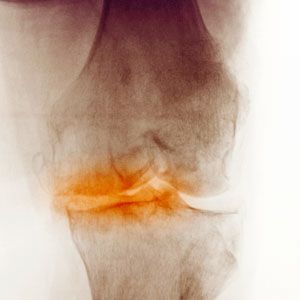Osteoarthritis (OA) is a type of arthritis caused by “wear and tear” of the joints, especially in the knees and hips.
Prolonged wear and tear breaks down cartilage causing bones to lose their ability to absorb shock and glide during movement. Older individuals and women are more likely to suffer from OA.
What can I do if I have OA?
While there is no known cure for OA, multiple treatment options are available to alleviate symptoms. It is important to take a multidisciplinary approach to healthcare and to work with a family doctor, pain physician or rheumatologist (a medical doctor who specializes in arthritis care), physiotherapist, and other healthcare professionals.
Physiotherapy
Physiotherapy can be an important precursor to starting an exercise program. Physiotherapy can involve manual manipulation of the joint to increase flexibility and/or rehabilitative exercises to increase joint functionality.
Common treatment tools in physiotherapy include:
- Ultrasound
- Light therapy (e.g. laser, infrared)
- Interferential currents (IFC)
- Transcutaneous Electrical Nerve Stimulation (TENS)
Exercise Therapy
Individuals with OA tend to refrain from physical activity due to pain. As a result, muscles that normally stabilize joints tend to weaken. Exercises that have a low impact on the joint (such as cycling or swimming) can help manage OA by:
- Restoring lost muscle mass
- Increasing the range of movement of joints
- Reducing pain and improving mood
- Promoting weight loss (especially when coupled with dietary changes), which lessens stress on joints
- High-impact activities such as running, heavy lifting, or jumping are NOT recommended for individuals suffering from OA
Medications
Acetaminophen (Tylenol) and Non-Steroidal Anti-Inflammatory Drugs (NSAIDs), including Ibuprofen, Diclofenac, and Naproxen, may be used to reduce pain. In severe cases, opioids may be prescribed.
Topical medications (e.g. Diclofenac or Capsaicin), patches, creams, or drops can also be used to manage pain.
Hyaluronic Acid (HA) is a component of the joint fluid that works to cushion the joint and allow for flexible movement. HA levels are lower in individuals with OA. HA can be injected into affected joints as treatment.
The effectiveness of HA injections varies among individuals.
Similarly, cortisone may be injected into the joint to relieve pain.



